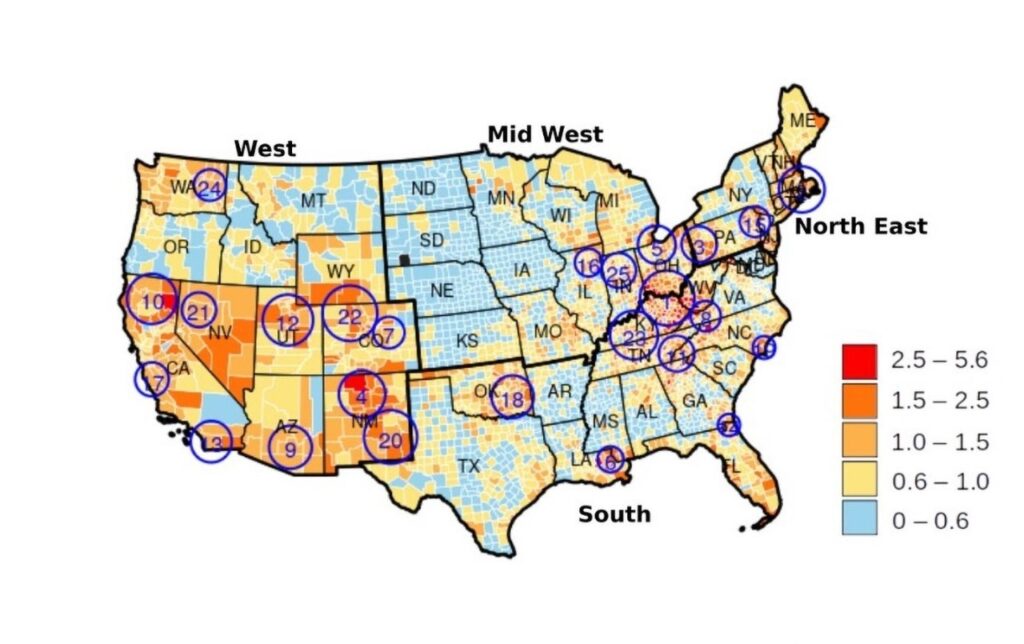The opioid epidemic spans across America, affecting big cities and small towns in every state; while it’s a national issue, specific demographics are disproportionally affected. It’s important to look at recent data to help implement preventative measures on a federal and community level to impact skyrocketing opioid overdose rates in the hardest-hit areas and most vulnerable people.
Regions Struggling with Opioid Addiction
Data between 2005 and 2017 recorded 463,717 opioid-related deaths in the United States. Using that information, researchers put together a map of the regions most impacted by these statistics.

Ohio, Pennsylvania, Kentucky, West Virginia, Indiana, and Tennessee have the highest density of opioid-related overdose deaths.
The dynamic these areas share is quite similar, with hotspots located adjacent to major cities. Focusing on localized data is crucial to understanding how to better treat the individuals who need treatment by considering the current services available, the socio-economic status of these communities, and the most common barriers to methadone treatment, a method still tied up in legislation in many states.
People at Highest Risk of Opioid Use Disorder
Along with regional data, specific human demographics add another layer to the complex opioid crisis as researchers look to find more comprehensive solutions. Data shows that white males between the ages of 25 and 29 were the most high-risk of fatal opioid overdose, followed by the age range of 30 to 34. While more work needs to be done to discover precisely why this segment of the population is so predominantly affected, narrowing down the data is the first step towards understanding.
Another segment of the population that’s beginning to see an increase in opioid-related overdose deaths are Black males ages 30 to 34. Experts predict that this group may rise to become the primary demographic affected, confirmed by preliminary data from 2020.
Those who are undergoing mental and physical distress also strongly correlate with a 30% higher risk of opioid overdose. Untreated mental illness is one of the most common causes of drug experimentation and substance misuse, yet the two have rarely been treated together until recently. It’s become more apparent than ever that comprehensive addiction treatments are needed and the push for policymakers to ensure accessible treatment for both mental health and substance use disorder.
Tackling the Opioid Crisis with Data
With the research collected, focusing efforts on the areas and people most effective is the obvious solution, but putting it into action won’t be easy. Addiction is a complex disease that’s continually evolving. It calls for innovation in opioid use disorder treatment and for scientists to think outside the box when it comes to helping people remain in long-lasting recovery well into the future. By improving access to healthcare, specializing medical professionals to deal with addiction, lessening stigma, and offering quality and comprehensive treatment, things will begin to move in the right direction.
BAART recovery programs are tailored to suit those looking to treat opioid use disorder using evidence-based medication-assisted treatment that includes necessary substance use counseling, among many other services. Find the nearest location and email or call today to learn more.



